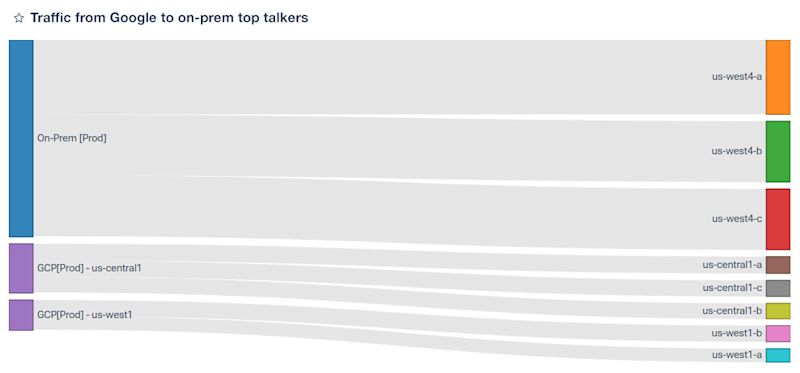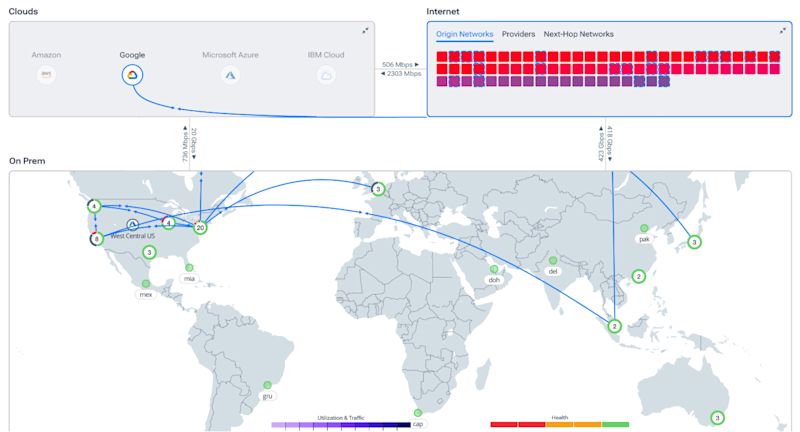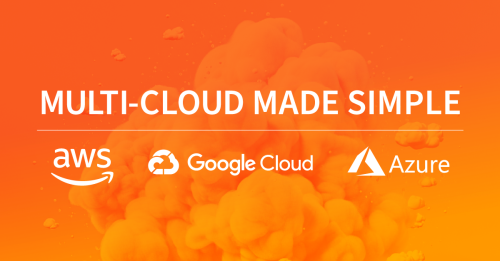Box and Kentik: A Google Cloud Migration Success Story


Summary
Tools and partners can make or break the cloud migration process. Read how Box used Kentik to make their Google Cloud migration successful.
Introduction
In the age of digital transformation, secure content management and collaborative prowess are as crucial as ever. Box is an esteemed leader in cloud content management, serving an impressive 68% of the Fortune 500. Over the years, Box has leaned on the Kentik Network Observability Platform to bolster its network performance. So, when Box faced the complex task of migrating to Google Cloud, they chose yet again to use Kentik as a trusted partner.
Background
Established in 2005, Box has built its reputation as the preeminent Content Cloud. Their ethos revolves around offering a singular platform for organizations to manage, collaborate, and secure content seamlessly. It’s no surprise that for such a pivotal migration, the importance of preserving their network’s integrity was at the forefront. Box simply couldn’t allow their users to see an interruption in service while they underwent the Google Cloud migration.
The scenario
Box’s network team faced the challenge of migrating to Google Cloud on a very short timetable. Given the condensed timeline, Box’s network team faced the dual challenge of ensuring on-prem visibility during and post-migration. Google Cloud does offer a suite of native tools for monitoring; however, they fall short in granting the comprehensive visibility that Box, accustomed to Kentik’s dashboards and insights, needed.
“We love the dashboards and the custom alerts we get with Kentik. Adding another network monitoring platform would have made our jobs so much more difficult. With Kentik, we are confident that we have the visibility we need to take action to ensure our network is performing optimally,” said Louis Bolanos, Staff Cloud Network Engineer.
That visibility enabled Box to discover lingering dependencies between cloud and on-prem services, helping to ensure an exceptional experience for customers during the migration.

However, Box’s existing on-prem infrastructure still needed maintenance throughout the migration. Monitoring and maintaining on-prem, cloud, and Kubernetes networks simultaneously without additional headcount would challenge this migration. Additionally, Box knew they needed to pinpoint latency issues, bandwidth utilization, and hairpinning between on-prem and cloud services.
Meeting security and compliance requirements was also an important consideration. Box needed to ensure stringent security measures were in place to protect sensitive customer data and comply with industry regulations while maintaining its high standard of seamless content collaboration and data sharing.
They soon realized that cloud costs could quickly spiral out of control without visibility into inter- and intra-cloud traffic flows. Identifying inter-region traffic volumes to perform cost attribution efficiently, even down to the level of Kubernetes clusters, would be a challenge.

Kentik’s role in the migration
Box’s partnership with Kentik proved instrumental in navigating the intricacies of the Google Cloud migration. Using Kentik offered Box:
- Cloud monitoring: Kentik was vital in providing in-depth traffic analysis, bottleneck identification, and overall network optimization during the migration. Network behavior within and between container workloads, particularly Kubernetes, was also critical to the Box networking team. “Visibility into cloud-deployed Kubernetes clusters in Kentik is super clear and makes troubleshooting so much easier,” said Bolanos.

-
Anomaly detection and alerting: Kentik highlighted all unusual network behaviors. Their real-time alerts enabled Box’s IT teams to avert potential service disruptions swiftly.
-
Security analytics: Kentik helped Box monitor network traffic for potential security threats and see malicious or anomalous activity easily.
-
Scalability and flexibility: Kentik’s cloud-native architecture seamlessly integrated with Box’s existing infrastructure and provided scalability to handle its growing user base and evolving business requirements. “We were able to provide custom migration dashboards for internal service owners, allowing them to observe traffic declines on services that were being sunset and discover misconfigured services routing calls to the wrong locations,” said Bolanos.
-
Cost efficiency: Crucial insights from Kentik ensured that traffic flowing to, from, and within Google Cloud remained performance- and cost-optimized.
The results
Kentik’s role in the migration was transformative. Bolanos encapsulates the sentiment, “Kentik saved us time and gave us full confidence that we’d be aware of and be able to respond to any cloud or on-prem network issues on a timely basis.”
With Kentik, Box could inventory and track migration progress efficiently, collaborate without pivot fatigue, and monitor/validate the performance of Box services during migration.
“As our network continues to evolve, we have confidence that Kentik will continue to meet our network observability needs. With the network diversifying into various flavors of virtualization on top of cloud migrations, this drove us to look at various aspects of network performance in different tools. Kentik’s Google Cloud and Kubernetes observability allowed us to investigate traffic on Google Cloud VMs and K8s clusters, including the separation of workload namespace to help simplify our suite of tools used for reporting and troubleshooting.”
Conclusion
Tools and partners can make or break the cloud migration process. The Kentik Network Observability Platform helped Box achieve the visibility and responsiveness native tools couldn’t provide while migrating to Google Cloud. Box can rely on Kentik to introduce or extend to a cloud network, perform migrations, or maintain hybrid cloud networks. “To save time and costs and improve the performance of hybrid networks, there’s no need to retool if you use Kentik,” said Bolanos.


